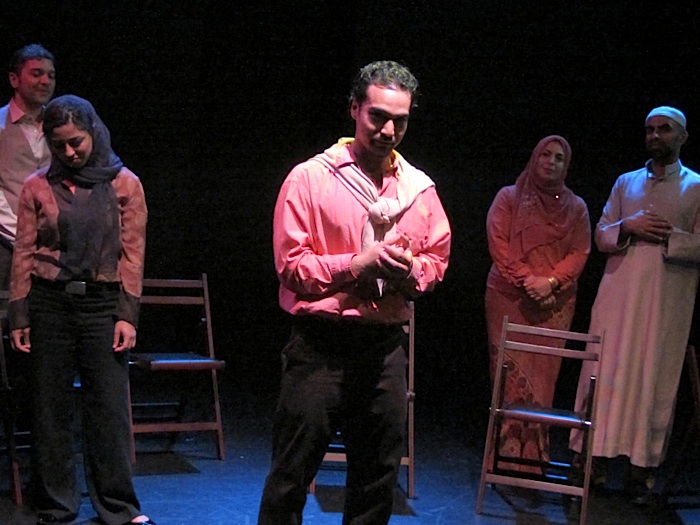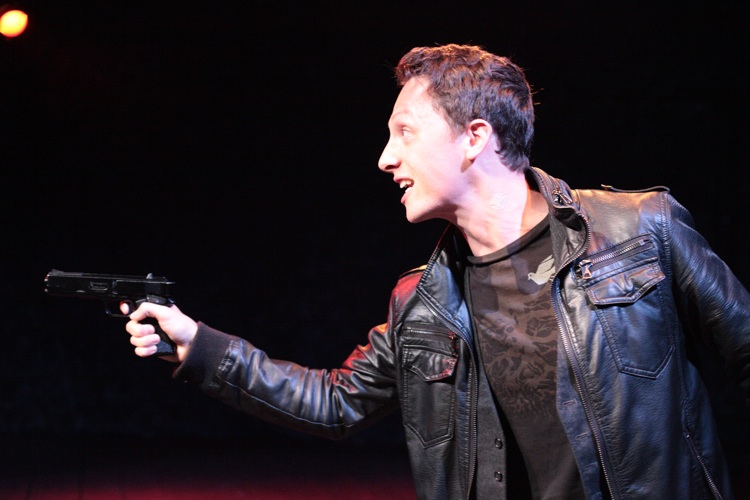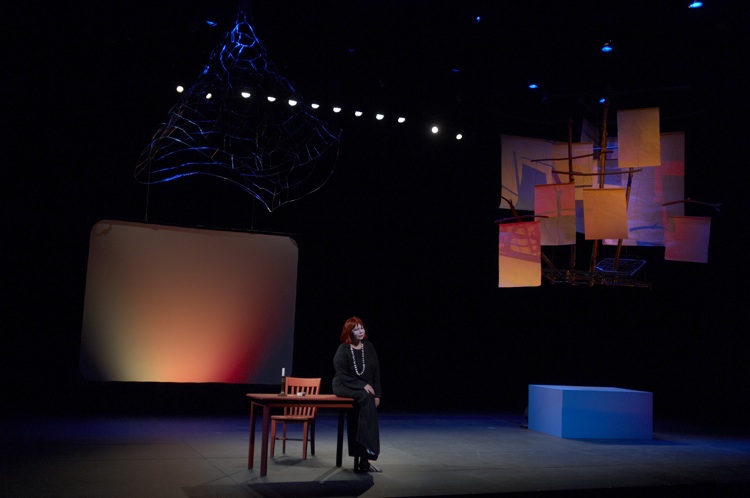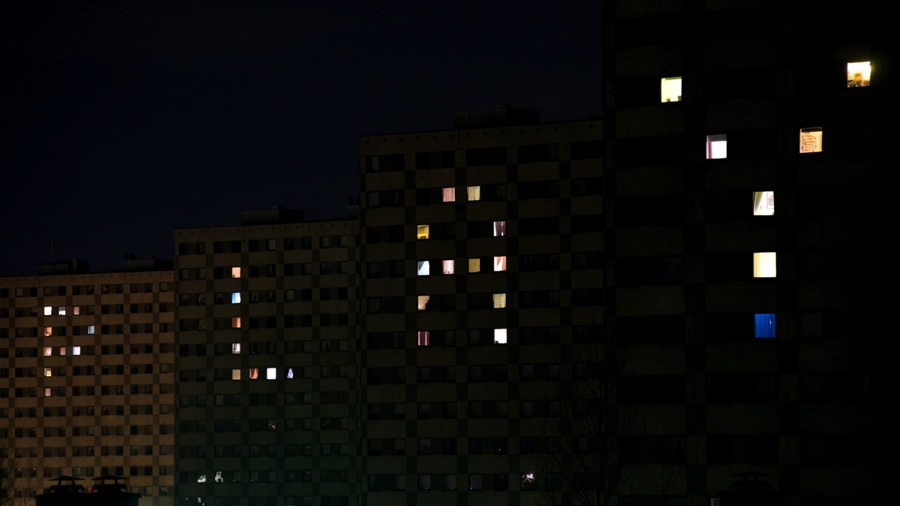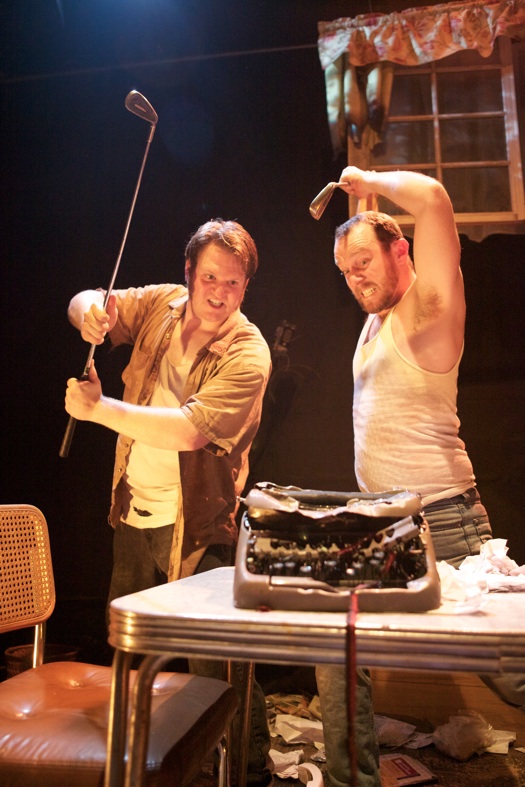Three playful performances by women offered vastly different perspectives.
Where’re the ladies at? Same place they’ve always been, really. Dancing backward in high heels. Getting on with the business of living while all around the world threatens to crash down around their feet. Politics. Murders. Institutionalized systems of oppression. Climate change. Is optimism overplayed? Or is hope all we have to keep us moving forward? This past weekend, three playful pieces gave stage time to the notion of moving forward in a world gone mad, each created and performed by a contingent of strong female figures, each bucking, in their own way, conventional wisdom on femininity and the future, with striking results.
Cara Rose DeFabio’s “she was a computer” at CounterPULSE a couple weekends ago wasted no time in plugging us into the modern. You won’t hear your house manager remind you to turn your cell phones back on at the top of a show too often, and scattered giggling ensued as we all reached into our pockets to turn our devices back on. In the blackout a telephone number flashed onto the back wall, and after some moments people begin catch on, dialed the number. The tinny sound of a pre-recorded message rose from all around. I received a mysterious text. After a time, the stage was taken by Sara Yasskey, who put on a record then spun slowly in time to a languid Lana Del Ray tune, an array of competing emotions passing across her face as she turned as if trapped in the outdated technology of the player. Nods to Facebook, Instagram, the rotary phone, and the dreaded “TTI” or “Technologically transmitted infection,” ensued, performed by Yasskey Niki Selken, Stacey Swan, and a luminous Pearl Marill, whose flirtatious foray into “hair dryer therapy” was easily one of the evening’s funniest.
The second performance on the CounterPULSE bill “Persian LOOKING,” by Maryam Farnaz Rostami took on a deliberately darker tone from the beginning, with a mannequin-like pose struck by the three performers to the driving pulse of a NIN track mashed up with what sounds like a mournful Middle Eastern lament. The tone of the performance, rife with ghosts and abuse, didn’t really lighten up until about a third of the way through, when we were introduced to Nazia (Maryam Farnaz Rostami) and Zeeba (Atosa Babaoff), two young women hidden behind the black lace of their veils, who spoke in exaggerated NorCal slang. Like OMG! I’m totes serious! The other most memorable character of the piece emerged soon after, an angrily intense Aylin Guvenc as Massoumah, an futuristic female warlord, incarcerated for her role in the Tulsa massacre of 2093.
“Wars used to be fought by men,” she sneered in disbelief, “can you imagine?” Arrogant, unsympathetic, Guvenc’s character embodied an unforgiving vision of a dystopian future, the only consolation of which was that it appeared to be slated for when we have all passed away.
Meanwhile, at Noh Space, Bolinas-based performance artist Sha Sha Higby’s latest work, “Folding into a Tempest,” eschewed defining either the past or the future, and instead embraced the present in real time, moment by moment. A poet of sculpture and movement, Higby’s distinct body of works emanate quite literally from her body, which she encases in high concept costuming of shaped wire, textiles, and a multitude of masks which conspire to hide her actual physical form from view: shield, armor, and obfuscation. Roaming the spare parameters of the stage, manipulating a variety of objects including puppets, more masks, and banners, Higby’s economy of motion displayed the sculptural elements of her elaborate attire to vivid effect, spurred on by a dreamy soundscape of night sounds, chirping birds, wind chimes, and occasional outbursts of oddience participation, until in the end she emerged from the fantasia of her own elaborate confinement, like a changeling exiled to the human dimension for reasons unexplained, perhaps unexplainable.

